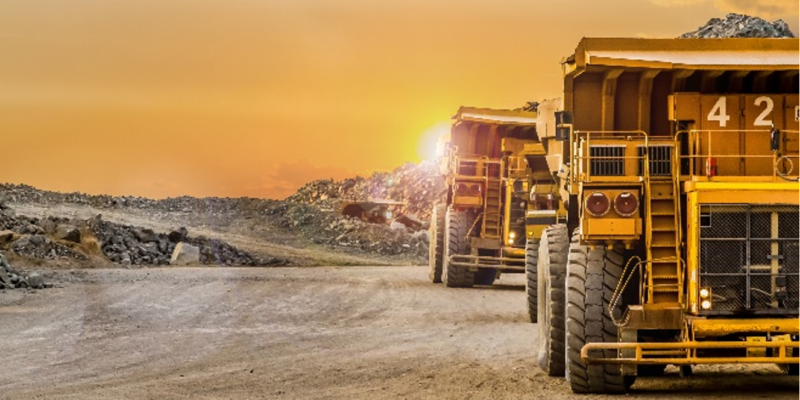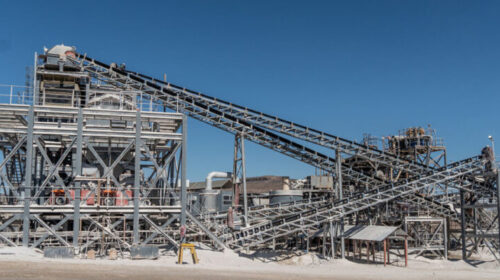It’s not as simple as ‘plug ‘n’ play’ for BEVs: new risks for mine operations
The technology powering battery electric vehicles (BEVs) is evolving, meaning that modern mining companies will need to go ‘back to basics’ to safeguard their operations effectively.
Marcello Sanchez, global sales manager – mining, Dafo Vehicle Fire Protection, discusses new risks from the industry’s shift to BEVs, exploring how operators and OEMs can minimise risks effectively.
Fires from mobile equipment are increasingly common in the mining and resource industry. As always, prevention is better than cure and there are several factors that can support the sector to better understand and mitigate how mobile equipment fires can:
- Cause significant risks for personnel
- Create consequences for underground operations
- Increase issues for equipment owners and operators
- Have strict reporting measures in mining jurisdictions
- Be analysed to improve mobile equipment fire management performance.
Enabling low-carbon mines
Recently, the mining industry has had to consider how it can become more sustainable to keep up with global environmental targets. This shift is therefore accelerating the industry away from internal combustion engine and diesel-powered vehicles and machinery.
BEVs can be considered more suitable for underground mines than any other industry because they don’t produce fumes, excess noise or heat. Therefore, BEVs are able to minimise the need for expensive ventilation measures to improve the overall mine environment for workers – and reduce costs for the site.
Emergency response and battery chemistry
All of the heat created by the battery of a BEV is generated from the current flow (Joule effect), with temperature management influencing the battery management system (BMS). The system monitors the average temperature of the whole battery pack as well as the individual cells. Typically, any high temperature conditions will be due to external heat sources or voltages and currents being out of range.
If the internal temperature of the battery becomes too high, a separator failure may occur, leading to internal short-circuiting. Some battery chemistries can mean this leads to thermal runaway, which can lead to the production of dangerous gases, flames and in some cases even explosions.
Once in thermal runaway, batteries can produce their own oxygen and self-sustain the fire from within. Therefore, fire suppression can be even more challenging, as these fires need a specific solution to minimise risks effectively.
Every second counts in preventing thermal runaway. The key is to detect battery failure and take immediate action to prevent consequences and disruption to mining operations.
Introducing BEVs to mining operations
When planning to introduce BEVs into operations, it’s important to consider:
- The battery’s chemistry and relevant fire suppression techniques
- Whether a battery’s chemistry matches the fire detection and suppression solutions installed
- Whether the operators and local emergency services have been appropriately trained
- In a mixed fleet:
- If a battery’s chemistry can be identified from a distance
- Whether mine operators have received training to identify battery chemistry and the appropriate response.
Minimising risk
As well as general best practice, operators should follow key steps to minimise fire risks:
- Risk assessment
To minimise these fire risks, OEMs should incorporate control measures when designing EVs used in underground mines. They can also provide end-users with sufficient information to implement the necessary emergency strategies should there be a fire.
Any new processes and equipment should be subject to a full risk assessment before integration into mining operations. This should consider how the machinery will be used within mining operations – instead of just in isolation – in addition to understanding how risks can change during a battery’s lifecycle.
- Select a system that meets individual risks
Once risks are identified, mine operators can ensure those risks are managed effectively by implementing any necessary control measures for maximum safety. Fire suppression solutions should adapt to the individual site – both its environment and any unique risks. This will minimise the number of false system activations to ensure maximum operational uptime.
- Fire suppression systems
All of the fire suppression systems installed into your mine’s BEVs should match the vehicle type and battery chemistry. For example, your site’s local regulations or site risk assessments may require an automatic system. However, if this is the case, you should also ensure that you can manually activate your suppression system in case of an emergency. All mine personnel should also be adequately trained with fire-fighting information for your operating environment.
For OEMs, integrating effective fire suppression systems during the manufacturing stage helps to ensure the protection of BEVs from the outset, in addition to ensuring relevant regulations are adhered to.
For those operating existing BEVs, appropriate suppression systems can be retrofitted onto your vehicle to improve safety.
Maintaining the suppression system of a BEV should also be integrated into the vehicle’s general vehicle maintenance routine.
Safeguarding the future of mining
As mining develops, we need to adapt the existing processes and systems to meet the new and changing risks.
All fire suppression systems should integrate into the mine’s operating environment to save lives and ensure maximum uptime for operations. For more information on reducing risks and protecting your mine’s BEVs, visit Dafo Vehicle Protection.
![]()





